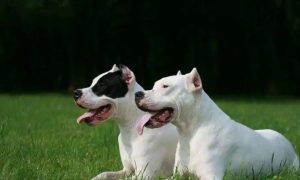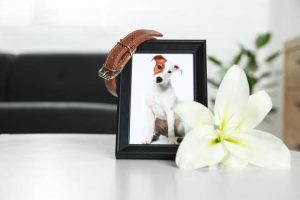Dog grooming is more than just making your furry friend look good; it’s an essential part of maintaining their health and well-being. Regular grooming sessions help keep your dog clean, comfortable, and free from parasites and infections. Whether you’re a new dog owner or an experienced one, understanding the basics of dog grooming can make the process enjoyable for both you and your pet. In this article, we’ll explore the essential aspects of dog grooming, including the benefits, techniques, and tools you need to keep your dog looking and feeling great.
The Importance of Regular Dog Grooming
Dog grooming is not just about appearance; it’s crucial for your dog’s overall health. Regular grooming can prevent various health issues and enhance your dog’s quality of life.
Health Benefits of Grooming
- Prevents Skin Issues: Regular grooming helps detect and prevent skin conditions like infections, hot spots, and allergies. Brushing removes dead skin cells and stimulates natural oil production, keeping the skin healthy.
- Reduces Shedding: Regular brushing helps control shedding by removing loose fur, reducing the amount of hair your dog leaves around the house.
- Prevents Parasites: Grooming allows you to check for fleas, ticks, and other parasites. Early detection can prevent infestations and associated health problems.
- Maintains Oral Health: Regular teeth brushing during grooming sessions helps prevent tartar buildup, bad breath, and gum disease.
- Improves Circulation: Brushing and massaging your dog’s skin improves blood circulation, promoting a healthier coat and overall well-being.
Dog Grooming Essentials
To groom your dog effectively, you’ll need the right tools and techniques. Here are the essentials every dog owner should know.
Brushing Your Dog
Brushing is a fundamental part of dog grooming. It removes dirt, dead hair, and tangles, and it distributes natural oils throughout the coat, giving it a healthy shine.
Types of Brushes
- Slicker Brush: Ideal for removing mats and tangles in long-haired dogs.
- Bristle Brush: Suitable for short-haired dogs, this brush smooths the coat and removes loose hair.
- Pin Brush: Best for dogs with medium to long hair, this brush helps remove debris and loose hair.
- Deshedding Tool: Useful for heavy shedders, it helps reduce shedding by removing loose undercoat hair.
How Often to Brush
- Daily: Long-haired breeds prone to tangling and matting.
- Weekly: Short-haired breeds that don’t tangle easily.
Bathing Your Dog
Bathing your dog is crucial for maintaining a clean and healthy coat, but it’s important not to overdo it. Overbathing can strip the coat of its natural oils, leading to dry skin and irritation.
Choosing the Right Shampoo
- Hypoallergenic Shampoo: Ideal for dogs with sensitive skin.
- Medicated Shampoo: Used to treat specific skin conditions, as recommended by a vet.
- Deodorizing Shampoo: Helps eliminate strong odors in dogs with a particularly smelly coat.
Bathing Frequency
- Every 4-6 Weeks: For most dogs, this frequency is sufficient to keep them clean without drying out their skin.
- As Needed: If your dog gets particularly dirty or smelly between regular baths, a quick bath with a gentle shampoo may be necessary.
Nail Trimming
Keeping your dog’s nails trimmed is important for their comfort and mobility. Overgrown nails can cause pain and lead to mobility issues.
How to Trim Your Dog’s Nails
- Use the Right Tools: A pair of sharp, dog-specific nail clippers or a nail grinder.
- Identify the Quick: The quick is the blood vessel inside the nail. Avoid cutting into it, as it will cause pain and bleeding.
- Trim Gradually: If you’re unsure, trim a little at a time to avoid cutting too much.
Ear Cleaning
Regular ear cleaning is important, especially for dogs with floppy ears, which are more prone to infections.
How to Clean Your Dog’s Ears
- Use a Vet-Approved Ear Cleaner: Apply a few drops into the ear canal.
- Massage the Base of the Ear: This helps the cleaner break up wax and debris.
- Wipe Away Debris: Use a cotton ball or soft cloth to gently wipe out the ear canal.
Dental Care
Oral hygiene is often overlooked but is crucial for your dog’s health. Regular teeth brushing can prevent dental diseases and bad breath.
How to Brush Your Dog’s Teeth
- Use Dog-Specific Toothpaste: Human toothpaste can be harmful to dogs.
- Start Slowly: Introduce your dog to tooth brushing gradually, using a finger brush or a dog toothbrush.
- Brush in Circular Motions: Focus on the outer surfaces of the teeth, where plaque tends to build up.
Professional Grooming Services
While regular at-home grooming is important, some dogs benefit from professional grooming services, especially for tasks that require specialized tools or techniques.
When to Consider Professional Grooming
- Complex Cuts and Styling: Breeds with specific grooming needs, such as Poodles, may require professional grooming.
- Heavy Shedders: Professional groomers can offer services like deshedding treatments that are more effective than at-home brushing.
- Matted Fur: If your dog has severe mats, a professional groomer can safely remove them without causing pain or damage to the coat.
Conclusion
Dog grooming is an essential part of being a responsible pet owner. Regular grooming not only keeps your dog looking great but also contributes to their overall health and happiness. By incorporating these grooming practices into your routine, you can ensure that your dog stays clean, comfortable, and free from common health issues. Whether you choose to groom your dog at home or seek the help of a professional, the key is consistency and attention to detail. With the right approach, grooming can be a bonding experience that strengthens the relationship between you and your dog, making it a time both of you look forward to.






More Stories
Dogo Argentino vs. Pit Bull: Which Breed Is Right for You?
Natural Remedies vs. Medicated Shampoos: What Works Best for Dog Odor?
From Collar to Keepsake: Transforming Pet Accessories into Heirloom Art